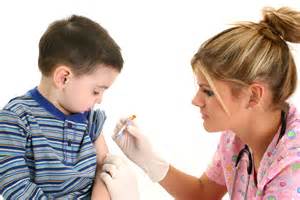By Heather White, Community Health Improvement Coordinator, Columbia Pacific CCO
Vaccine Exclusion Day across the Tillamook County is February 15th. Are you and your child ready? If you are not sure, you can find age-based requirements on tillamookcountyhealthmatters.org or ask your child’s primary care provider. The basic requirements common to all school-age children in Oregon over 18 months include being up to date on vaccines for:
- Diphtheria, Tetanus, and Pertussis or whooping cough
- Polio
- Varicella or chickenpox
- Measles, Mumps, and Rubella
- Hepatitis A and B
- Hib, a bacterial infection called Haemophilus influenzae type B. This requirement is for children under 5 years of age.
If you do not know if your children are up to date, please call your child’s primary care provider to get your Certificate of Immunization Status or to schedule an appointment for the your child needs. There are other recommended vaccines as well, listed here.
Vaccines can be a touchy topic for a lot of parents and providers alike. There are a lot of conflicting and scary things that get thrown out about vaccines, and it can be hard to know what is right. So here are some important facts about vaccines that might help ease the situation, based on information from the Centers for Disease Control and Prevention (CDC), WIC Works, and publichealth.org:
Truth #1. Vaccine appointments don’t have to be upsetting for your child or for you. There are many suggestions out there for how to ease yours and your child’s anxieties about vaccine visits, but the most important piece of advice is to do what works for your child that allows for the vaccines to happen. If they find them painful, give them an age- and weight-based dose of ibuprofen (Advil or Motrin) or acetaminophen (Tylenol). If they are afraid of shots, they will rely on you to keep them calm. This can be hard-no one likes when their child is uncomfortable! If you are afraid, they will be more so. Have a mental plan on ways to distract or inform them: let them bring their favorite toy if it will soothe them, don’t come too early if sitting in the waiting room makes them nervous, talk calmly to them about what the doctor or nurse is doing and why it’s important, or whatever will help your child most.
Truth #2. Vaccines don’t cause autism, or any other chronic condition. The article which first claimed a link between vaccines and autism was not only retracted and debunked due to serious financial conflicts of interest and violations of ethics and procedures. The true causes of autism remain a topic of research, but several studies have now found that autism develops before a baby is born or receives vaccinations. Repeated studies over the decades have yet to find a single chronic condition that is caused by vaccines. We can have allergies to components of vaccines.
Truth #3. Your child’s immune system can handle all of the vaccines in the number of visits the CDC recommends. Our bodies are amazing! Based on the number of disease-fighting cells called antibodies in the blood, your child could theoretically have 10,000 vaccines at one time and not overwhelm their immune system. This includes infants! The schedule designed by the CDC is based on a lot of research on how to get as many kids safely immune to illnesses as possible. The obvious exception to this is children whose immune systems are compromised by cancer or other specific illnesses. Sometimes after vaccines your child may show symptoms of being ill: a low-grade fever, discomfort, etc. This is because it is the vaccine working, by causing our immune systems to respond to it and then build immunity to the diseases. Not because of the disease itself.
Truth #4. Vaccines don’t contain unsafe toxins. The idea of something being a “toxin” is based more on how much a human body can tolerate before it makes someone sick. People tend to have concerns over chemicals like mercury or aluminum. There are chemical-specific amounts of either that would be considered toxic, but vaccines contain levels that are safe, and nowhere near toxic. In fact, some of the chemicals most touted as being harmful are actually naturally produced by our bodies or ingested from our foods safely at higher levels than exist in our vaccines.
Truth #5. Vaccines are far safer than “natural immunity.” Vaccines are developed to reduce our chances of dying from diseases. That’s why so many of the diseases prevented by vaccines are no longer common in this country. Yet in Oregon and other states where vaccination rates are lower there are many more outbreaks and deaths due to diseases like measles, whooping cough, chickenpox, and other illnesses. And all of those illnesses are far more deadly to groups of people that can’t be vaccinated such as infants, older adults, and children with compromised immune systems. For example, the risk of dying from an allergic reaction to the measles vaccine one-in-one million, but the risk of dying from the measles if you get the measles and have not vaccinated is 1 in 500. That’s a huge difference.
Truth #6. Community immunity is vital to protecting our children. Community immunity—also referred to as “herd immunity”—is when enough of a group of people are immunized that even those who can’t vaccinate are protected from the illness. The needed percentage of people for this to work is very high, but slightly different for each vaccin. In Oregon, we routinely fall far below those levels. This means that so many people are relying on so few other people to vaccinate that we are all at a higher risk of getting sick. Like many other things in life, our community is healthier when we do our part to protect our kids.

